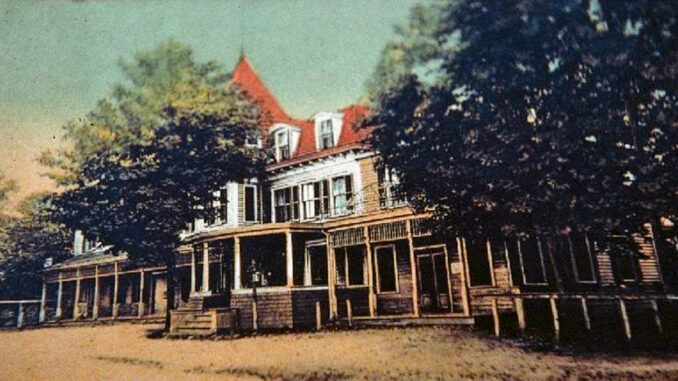
PASCACK VALLEY—This week 130 years ago, the Pascack Valley saw the formation of its third borough. But unlike the two preceding it—Westwood and Park Ridge—hardly anyone knows the name Eastwood.
Eastwood was the shortest-lived borough in Pascack Valley history. No doubt some people reading this live on land that was once Eastwood, but they are unaware of it. That’s because the little borough, which formed June 6, 1894 on the border of southern River Vale and Old Tappan, was around for only two years before dissolving.
If you read this column regularly, you will know that all of our Pascack Valley municipalities are united by the fact that they used to be part of the Township of Washington. In 1894, the boroughs began to break away. Taxation and the need for local control, coupled with a push to modernize as the valley went from rural to suburban in the late 19th century, were all factors in the breaking apart of the township.
Like a domino effect, Westwood led the pack in May of 1894, with Park Ridge, Eastwood, Woodcliff, and Montvale following along the same year. Hillsdale incorporated in 1898, Emerson in 1903, and River Vale in 1906. Only a small portion of the original township remained, and that is what we now know as the Township of Washington.
Eastwood formed from perhaps the most isolated and sparsely populated corner of the township. Without a railroad line running through it, this section had remained isolated and rural, the landscape a patchwork of farmland and wooded acres. Unfortunately, the village’s serene and bucolic atmosphere belied a very hostile political scene.
After Westwood and Park Ridge had broken off from the Township of Washington, what remained of the township leaned heavily Republican. This did not sit well with Edward C. Sarson, age 30, a Democratic Party boss who lived in what is now River Vale. He and his friends led the charge to form a new borough—and they took gerrymandering to the next level.
Eastwood’s Democratic founders laid out the borough’s boundaries to avoid known Republicans whenever possible, zig-zagging around properties to include some farmhouses and exclude others. They also maneuvered the borough lines to exclude non-whites, swerving around the houses of black tenant farmers who worked for the village’s affluent landowners.
“Some of the wealthy farmers in that locality maintain small tenant houses near their dwellings and outbuildings for their colored [sic] laborers,” the New York Evening World reported on May 29, 1894. “Trifles like this were put aside, and the lines of Eastwood borough in some cases were laid out, from one corner to another, between the farmer’s dwelling and his nearby tenant house.”
One Republican who was excluded from the borough, housepainter John Heck, was arrested on a charge of intimidating Eastwood supporters ahead of the vote on incorporation. Blauvelt Post, William Blauvelt, and Adam Collignon all said that Heck had threatened to have their hotel licenses revoked if they voted in favor of the new borough. Heck denied this, saying he merely told the men “what he could do, if he wished.”
When Eastwood was incorporated on June 6, 1894, the community of 90 legal voters was composed of only white men, who stood politically 77 Democrats to 13 Republicans.
Republican John J. Bogert was a farmer and miller who was included in the new borough, but whose property was divided in half by the new boundary that excluded his five black tenant farmers. He was so incensed by the move that he had the entire tenant house picked up and moved within the border of Eastwood.
“I will do more than that,” Bogert told a reporter at the time. “I will build another tenant house within the borough and give it to the black folks rent free, to induce more to live in Eastwood. We will teach Ed Sarson on the color line.”
When the new borough held its election on June 26, 1894, a slate of Democrats was elected. The first and only mayor of Eastwood was Garrett R. Hering (1831–1898), a gentleman farmer and former Bergen County sheriff.
Just as it had brought about the borough’s birth, it was political rivalry that caused the Eastwood’s demise. A rift among the Democrats saw a faction of that party team up with Republicans and initiate a movement to dissolve the borough and return to the Township of Washington.
A vote at the local meeting place, Lachmund’s Hall, on March 26, 1896 saw ballots cast 47–32 in favor of dissolving.
A portion of Eastwood east of the Hackensack River was quickly annexed by the newly formed Borough of Old Tappan. However, the majority of the defunct borough reverted back to the Township of Washington and remained there for the next decade. It was included as part of southern River Vale when the township formed in 1906.
